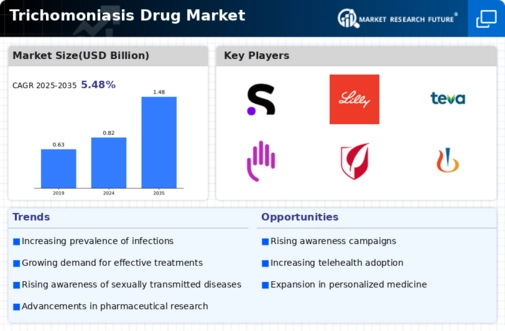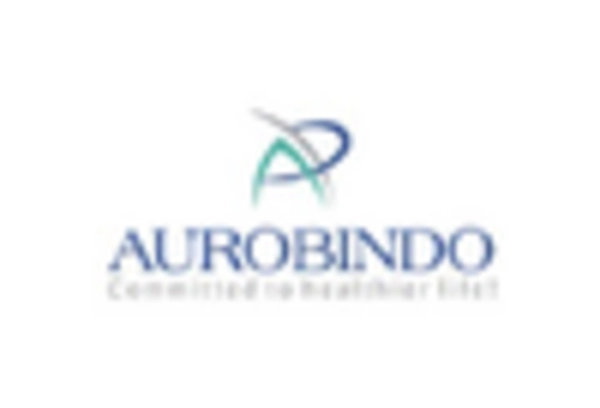Increased Focus on Sexual Health
There is a growing emphasis on sexual health and wellness, which serves as a significant driver for the Trichomoniasis Drug Market. Public health campaigns aimed at reducing sexually transmitted infections have gained momentum, leading to heightened awareness and proactive measures among individuals. This cultural shift encourages more people to seek testing and treatment for trichomoniasis, thereby increasing the demand for effective drugs. Furthermore, healthcare providers are increasingly integrating sexual health into routine medical care, which may lead to more frequent diagnoses of trichomoniasis. As a result, the Trichomoniasis Drug Market is likely to experience growth as more individuals seek treatment options, reflecting a broader trend towards prioritizing sexual health.
Government Initiatives and Funding
Government initiatives aimed at combating sexually transmitted infections are a crucial driver for the Trichomoniasis Drug Market. Various health departments and organizations are allocating resources to develop and promote effective treatment options for trichomoniasis. Funding for research and public health campaigns is increasing, which may lead to the discovery of new drugs and treatment protocols. Additionally, government-sponsored programs that provide free or subsidized testing and treatment can significantly impact the market by increasing patient access to necessary medications. This proactive approach by governments is likely to stimulate growth in the Trichomoniasis Drug Market, as more individuals receive timely and effective treatment.
Rising Incidence of Trichomoniasis
The increasing prevalence of trichomoniasis is a notable driver for the Trichomoniasis Drug Market. Recent estimates suggest that millions of new cases are reported annually, particularly among sexually active individuals. This rise in incidence is likely to spur demand for effective treatment options, thereby enhancing market growth. The World Health Organization has indicated that trichomoniasis is one of the most common sexually transmitted infections, which further emphasizes the need for accessible and effective drugs. As awareness of the infection grows, healthcare providers are more likely to recommend testing and treatment, contributing to the expansion of the Trichomoniasis Drug Market. Consequently, pharmaceutical companies may invest more in developing innovative therapies to address this public health concern.
Technological Advancements in Treatment
Technological innovations in drug development and delivery systems are propelling the Trichomoniasis Drug Market forward. Recent advancements in pharmacology have led to the creation of more effective and targeted therapies for trichomoniasis. These innovations not only improve treatment outcomes but also enhance patient compliance due to reduced side effects and simplified dosing regimens. Moreover, the integration of digital health technologies, such as telemedicine and mobile health applications, facilitates easier access to treatment and follow-up care. As these technologies become more prevalent, they are likely to drive the growth of the Trichomoniasis Drug Market by making treatment more accessible and efficient for patients.
Growing Investment in Pharmaceutical Research
The pharmaceutical sector is witnessing a surge in investment directed towards research and development for sexually transmitted infections, including trichomoniasis. This trend is a vital driver for the Trichomoniasis Drug Market, as increased funding allows for the exploration of novel therapeutic agents and treatment strategies. Pharmaceutical companies are recognizing the unmet needs in the market and are likely to prioritize the development of new drugs that address these gaps. Furthermore, collaborations between academic institutions and industry players are fostering innovation in drug discovery. As a result, the Trichomoniasis Drug Market is poised for growth, driven by a robust pipeline of new therapies aimed at effectively treating this common infection.


















Leave a Comment